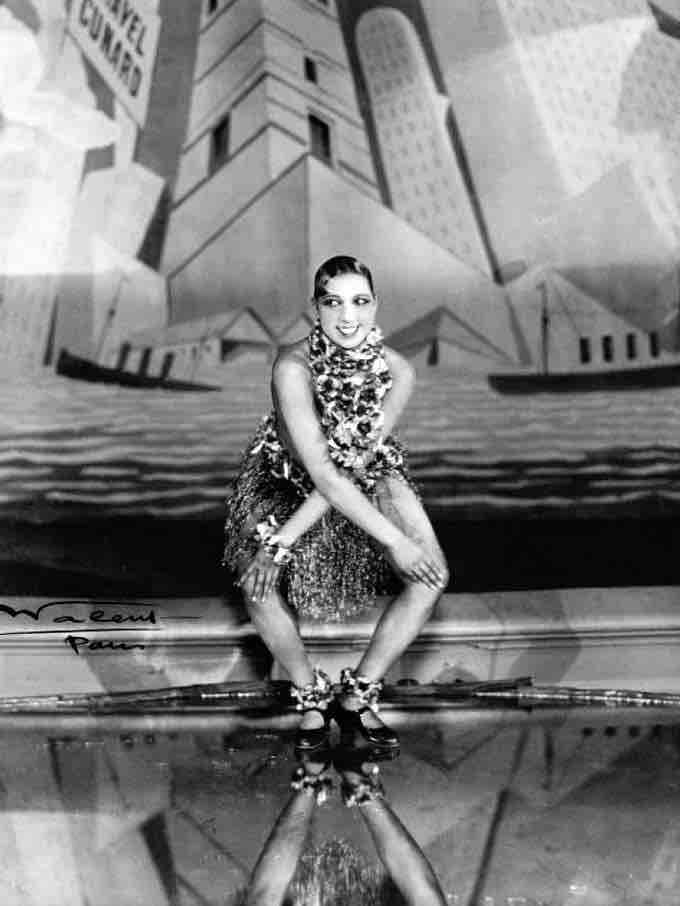The 1920s saw the rise of the flapper, a new breed of young women who wore short skirts, bobbed their hair, danced, and flouted social and sexual norms. Flappers were known for their style and the widespread popularization of new culture trends that accompanied it. They personified the musical and dance movements emerging from the dance clubs playing Jazz and new versions of old music, which became enormously popular in the 1920s and into the early 1930s.
Flapper Style
Jazz and other new musical and dance forms exploded onto society in the 1920s. This pop culture movement was personified by the flappers, whose fashion styles represented their free spirits and new social openness. This style largely emerged as a result of French fashions, especially those pioneered by the French designer Coco Chanel. Called garçonne in French ("boy" with a feminine suffix), flapper style aimed to make girls appear young and boyish: short hair, flattened breasts and straight waists were common features of this look. Although the appearance typically associated now with flappers – straight waists, short hair and a hemline above the knee – did not fully emerge until about 1926, there was an early association in the public mind between unconventional appearance, outrageous behavior and the word "flapper."
Coco Chanel, 1920
Gabrielle "Coco" Chanel was a French designer who was highly influential in the flapper fashion style of the 1920s.
The flapper look included short, disheveled hair in boyish styles such as the Bob cut, while finger waving was used as a means of styling. The evolving flapper appearance required "heavy makeup" in comparison to what had previously been acceptable outside of professional use in the theater. With the invention of the metal lipstick container and compact mirrors, bee stung lips and an emphatic mouth came into vogue. Huge, dark eyes heavily outlined in mascara, especially kohl-rimmed, were in style. Blush came into fashion when it ceased to be a messy application process.
Pale skin was originally considered to be the most attractive, but tanned skin became increasingly popular after Coco Chanel donned a tan after spending too much time in the sun on holiday. A tan suggested a life of leisure, without the onerous need to work. In this way women aspired to look fit, athletic and healthy. Jewelry usually consisted of art deco pieces including beaded necklaces and brooches. Horn-rimmed glasses were also popular.
Despite any scandalous images flappers generated, their look became fashionable in a toned-down form among respectable older women. Significantly, the flappers removed the corset from female fashion, raised skirt and gown hemlines, and popularized short hair for women. Flapper dresses were straight and loose, leaving the arms bare and dropping the waistline to the hips. Silk or rayon stockings were held up by garters. Skirts rose to just below the knee by 1927, allowing flashes of leg to be seen when a girl danced or walked through a breeze. High heels between two and three inches also became popular.
Flappers did away with corsets and pantaloons in favor of "step-in" panties and simple bust bodices to keep their chests in place dancing. They also wore new, softer and suppler corsets that reached to their hips, smoothing the whole frame, giving them a straight, up and down appearance, as opposed to the old corsets that slenderized the waist and accented the hips and bust.
Flapper Magazine
The cover of "The Flapper" magazine for November 1922.
Dance Music, Clubs and Contests
In the flapper period, dance music took parts of various existing musical styles and created a new form. Classical pieces, operettas, and folk music were all transformed into popular dance melodies in order to satiate the public craze for dancing. For example, many of the songs from the 1929 Technicolor musical operetta, The Rogue Song, starring the Metropolitan Opera star Lawrence Tibbett, were rearranged and released as dance music and became popular club hits in 1929.
The advent of "Talkies," motion pictures with synchronized sound, made musicals all the rage. Hollywood film studios flooded the box office with extravagant and lavish musical films, many of which were filmed in early Technicolor, a process that created color motion pictures rather than the starker black-and-white films. One of the most popular of these musicals, Gold Diggers of Broadway, became the highest-grossing film of the decade in 1929.
Gold Diggers of Broadway
The 1929 musical, Gold Diggers of Broadway, became the highest-grossing film of the decade.
The Harlem neighborhood of New York City played a key role in the development of dance styles by serving as the location of several popular entertainment venues where people from all walks of life, races and classes came together. The Cotton Club featured black performers and catered to a white clientele, while the Savoy Ballroom catered to a mostly black clientele.
Dance Styles
Dance clubs across the United States sponsored contests in which dancers invented and competed with new moves and professionals began to hone their skills in tap dance and other current moves. The most popular dances throughout the decade were the Foxtrot, Waltz and American tango. Large numbers of recordings labeled under these styles gave rise to a generation of famous recording and radio artists.
From the early 1920s, however, the dance scene produced a variety of eccentric trends. The first of these were the Breakaway and the Charleston, which were both based on African-American musical styles and beats, including the widely popular Blues. The Charleston's popularity exploded after its feature in two 1922 Broadway shows. A brief Black Bottom craze, originating from the Apollo Theater, swept dance halls from 1926 to 1927, replacing the Charleston in popularity. By 1927, the Lindy Hop, based on the Breakaway and the Charleston and integrating elements of tap, became the dominant social dance and was the forebear of Swing dancing.

Josephine Baker does the Charleston
Celebrated singer Josephine Baker dances The Charleston, one of the novelty dances that swept pop culture in the 1920s.